While in the Bahamas last year, we realized that the single biggest upgrade we needed was a better dinghy. We got our old dinghy when we were living and cruising in the Chesapeake Bay. It was a little over 8′ long, had a “soft” (inflatable) bottom, and was powered by a 2HP electric motor with an integral lithium battery. It was very light and easy to stow and had the huge advantage of not needing to carry any gasoline. This setup was perfect for the Bay where the distances we needed to travel by dinghy were short, the beaches had no coral or rocks, and the water was generally calm.
All of that was different in the Bahamas. We often needed to travel long distances in the dinghy and contend with rocks and coral on the beaches. We had to carry snorkel/fishing gear, groceries, laundry, and guests. We also sometimes had to travel in rougher open water, We needed a dinghy that was bigger, faster, and more robust.
One thing we really liked about our old dinghy was its electric engine. We hoped we could just move up to a larger version of an electric outboard along with a larger dinghy. While larger electric outboards exist in the size we needed, we couldn’t justify the much greater cost and added weight. We did a lot of research on this and were very disappointed. Electric outboards compete favorably with their gasoline equivalents in the 2HP range, but they are 5 times the cost and almost twice the weight in the 20HP range (mainly because of the battery requirement). Technology has a long way to go here.
So the choice came down to the biggest dinghy and gas engine combo we could find in the lightest weight package. We still intended to use our existing davit system which is integrated into our cockpit arch so the dinghy length and weight had to fit those parameters. We also didn’t want something so heavy that we couldn’t pull it up manually with block and tackle.
After a lot of looking, we decided on a Walker Bay Genesis 310 which we got last summer. It is 10’2″ long (2 feet longer than the old dinghy) and has a rigid bottom with inflatable sides (a.k.a. Rigid Inflatable Boat – RIB). The bottom is formed in one piece with injection molded plastic. This material is quite durable and is much lighter than fiberglass or aluminum. The 2018 Honda outboard (20HP – 4 stroke) is the lightest in its class at 104 lbs. This is lighter than any 2 stroke outboard we could’ve gotten in the same power range. The boat has console steering and seating for four people. Including the engine, it weighs in at a svelte 325 lbs. (a little more with all our gear and a full gas tank). That’s about 150-200lbs lighter than other boats we looked at of the same size and HP.
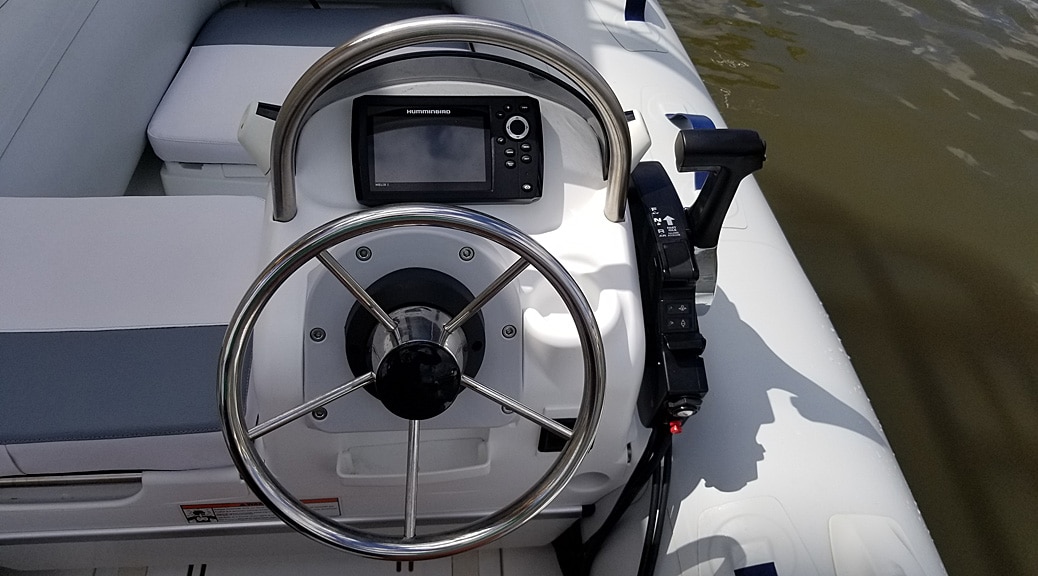
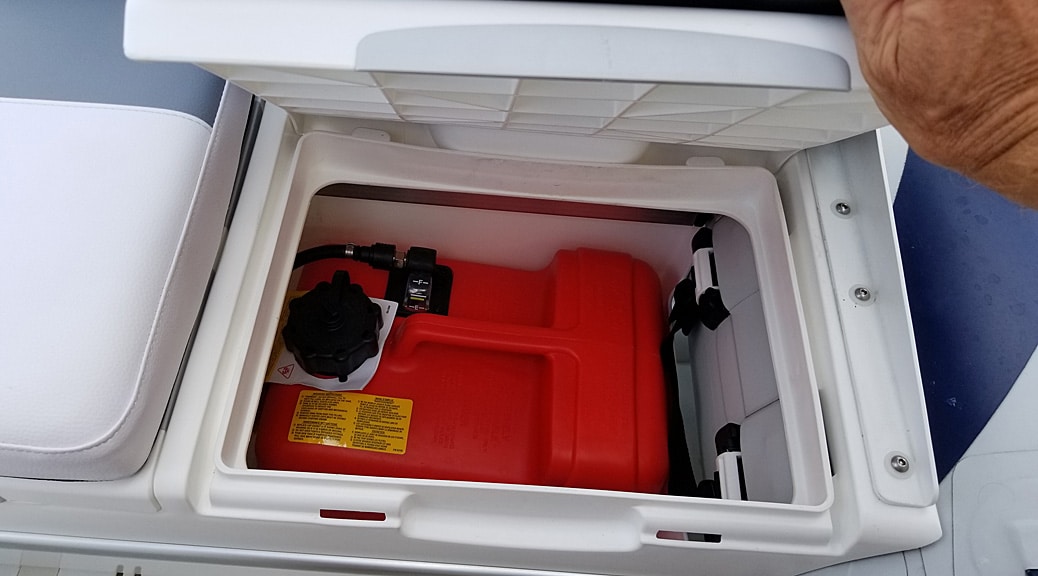
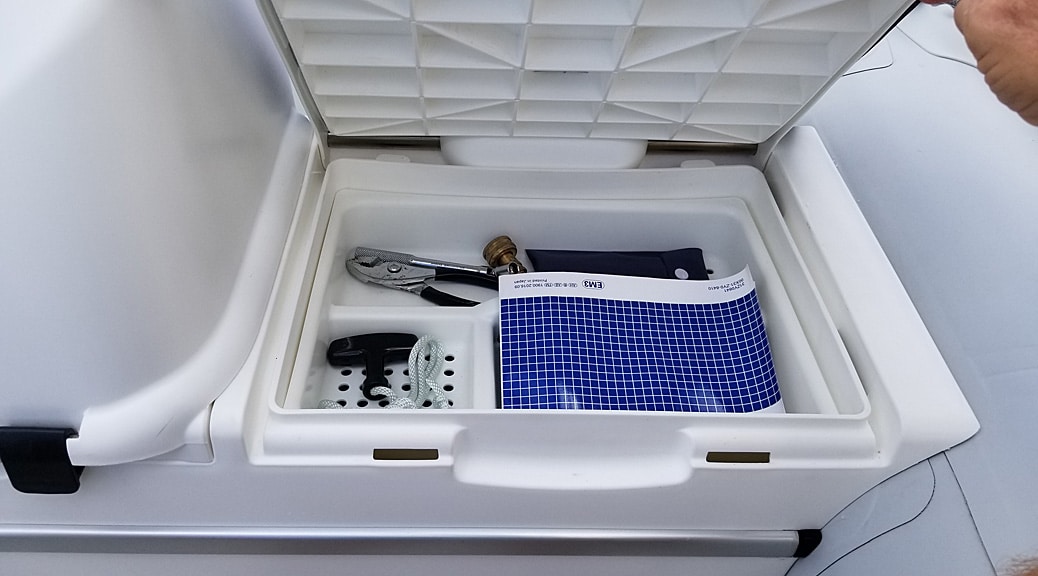
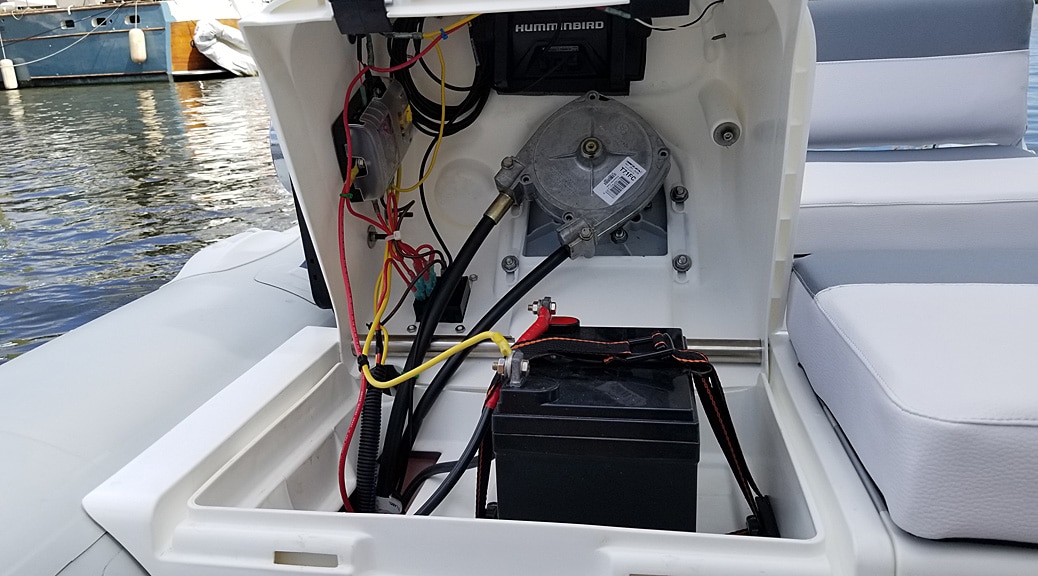
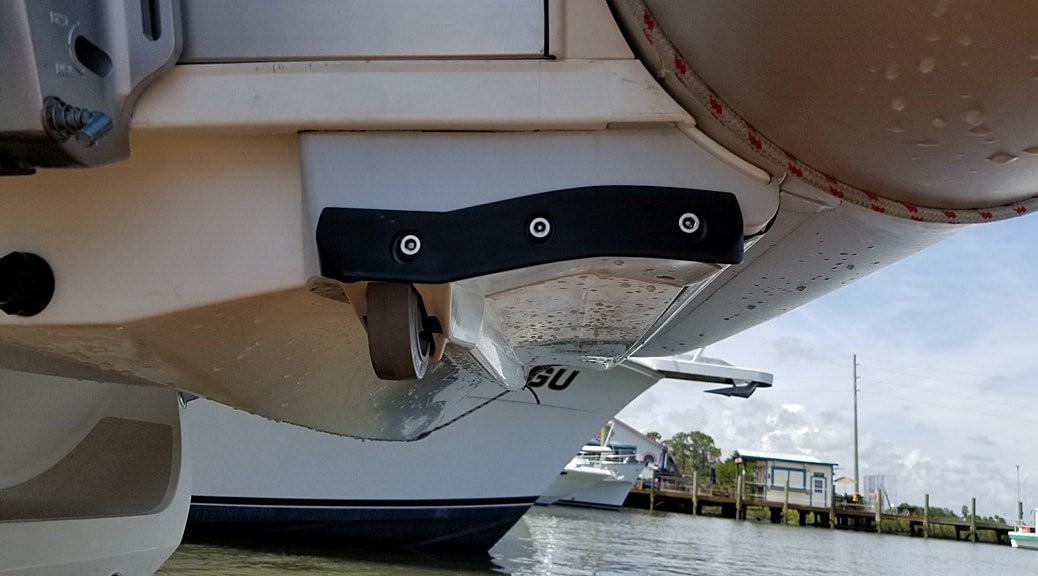
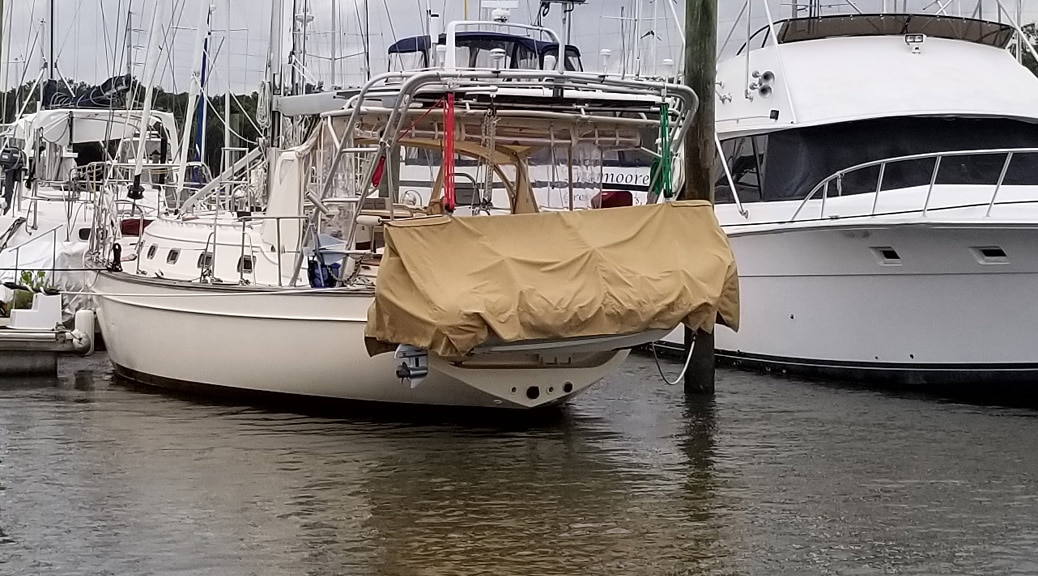
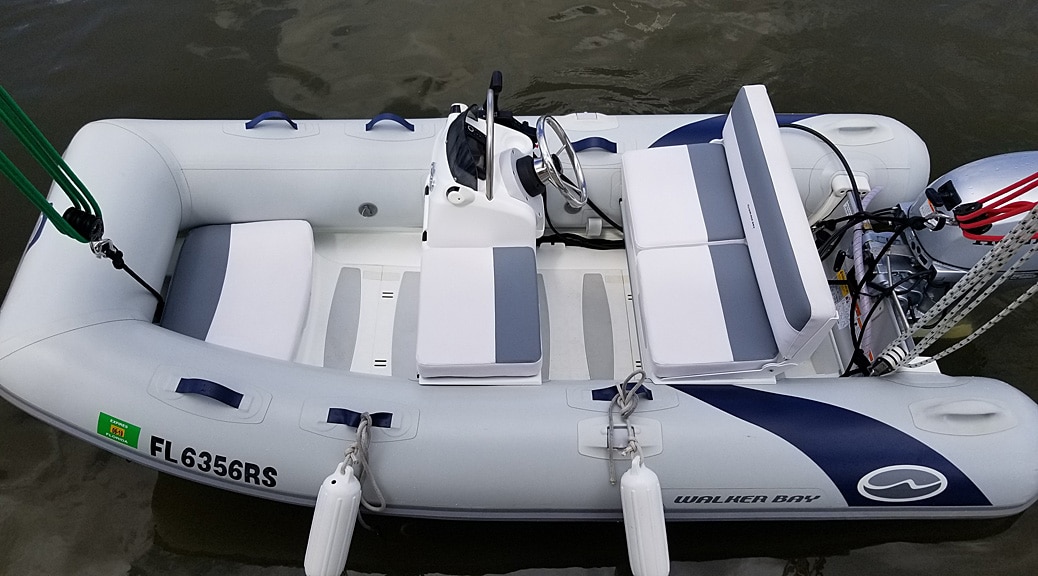
4 Responses
nice boat with great amenities. I would have personally preferred to have the cover of white sunbrella. I guess that’s why they make chocolate and vanilla.
As you can see from the picture, the cover required a lot of fabric. Since the Sunbrella is so expensive, we buy what’s on leftover bolts from our local “sailor’s exchange”. It’s way cheaper that way, but we don’t often have a good choice of colors.
Love it! Nice runabout!!! That’ll get up and go. Have you planed her out yet? How does she handle at higher speeds?
She planes very nicely and will get up to 20 MPH with Paula and I both in it. Handles like a sports car.